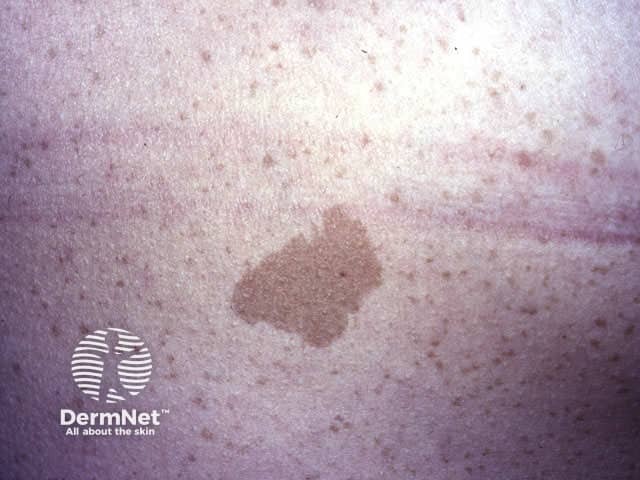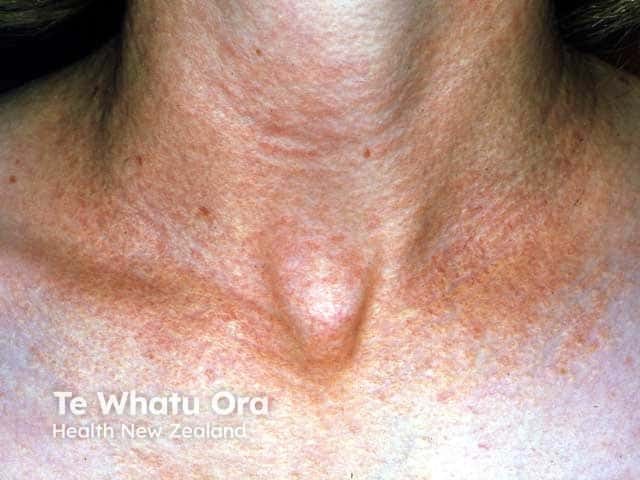Main menu
Common skin conditions

NEWS
Join DermNet PRO
Read more
Quick links
Created 2009.
The three conditions described on this page are the most common genetic syndromes that may present initially to a dermatologist. A number of mutations in specific genes have been described for them, resulting in quite variable clinical presentations. Spontaneous mutations are probably responsible for about 50% of cases.
Neurofibromatosis is a neurocutaneous condition but can involve many organs. There is autosomal dominant inheritance due to many different mutations in the neurofibromatosis gene. Neurofibromatosis 1, NF-1 or peripheral neurofibramtosis, is the most common type affecting the skin but the mosaic form, segmental NF, is occasionally seen.
Cutaneous signs of NF-1 include:
Other signs may include:
Annual examination of the skin, eyes and hearing should be carried in childhood. Neurofibromas that increase in size or become painful should be excised as these may be signs of malignant change.
Café au lait macule Neurofibromas Plexiform neurofibroma Axillary freckling Skin tags 




Tuberous sclerosis, also known as epiloia, is an autosomal dominant genetic neurodermatosis affecting cellular differentiation and proliferation resulting in hamartoma formation in many organs.
It presents with epilepsy, mental retardation and cutaneous signs. These include:
The facial angiofibromas may be quite disfiguring. They may be successfully treated by a vascular or ablative laser.
angiofibromas Ash-leaf macule Periungual fibroma 


Pseudoxanthoma elasticum (PXE) is a group of inherited disorders in which elastic tissue in skin, blood vessels and eyes is defective. The result is groups of yellowish bumps on the neck, axillae and elsewhere associated with gastrointestinal haemorrhage, hypertension, peripheral vascular disease and ocular “angioid” streaks and retinal haemorrhages. PXE is generally diagnosed in young adults.
Yellow plaques of PXE on the neck 
Describe the genetic defects resulting in neurofibromatosis, tuberous sclerosis and PXE.
Information for patients
See the DermNet bookstore